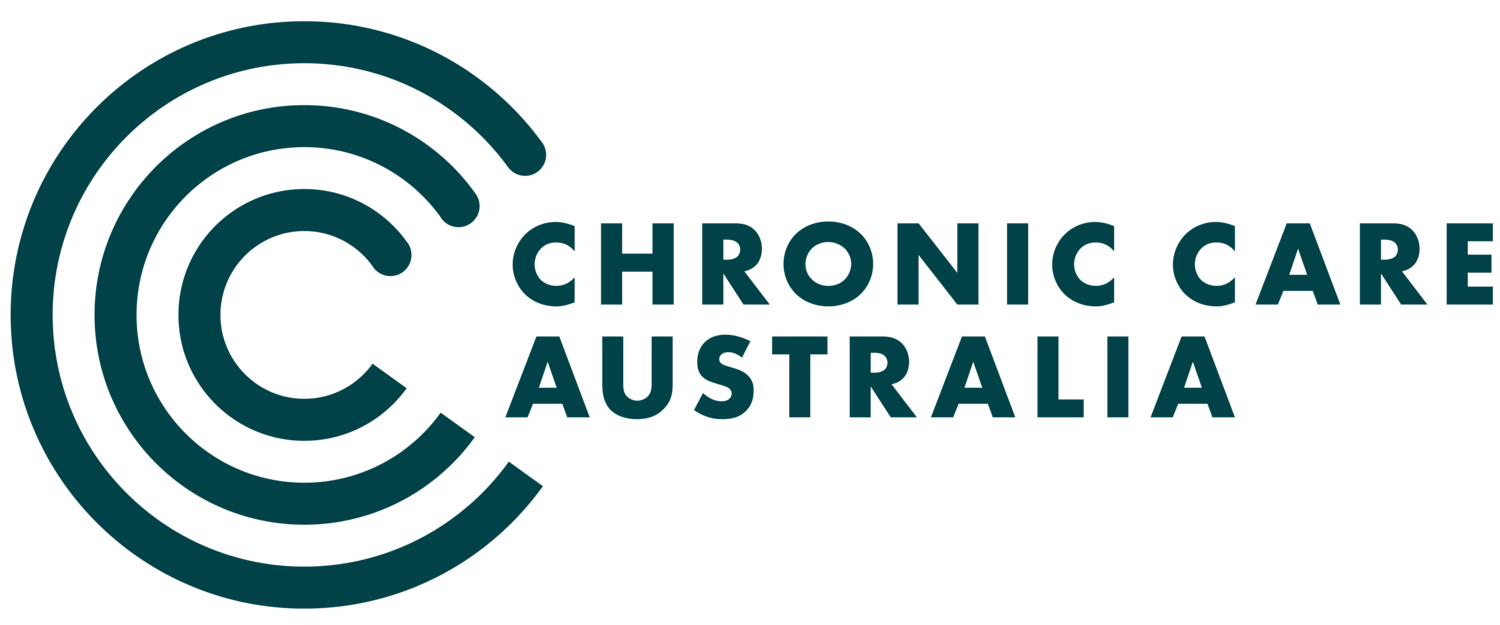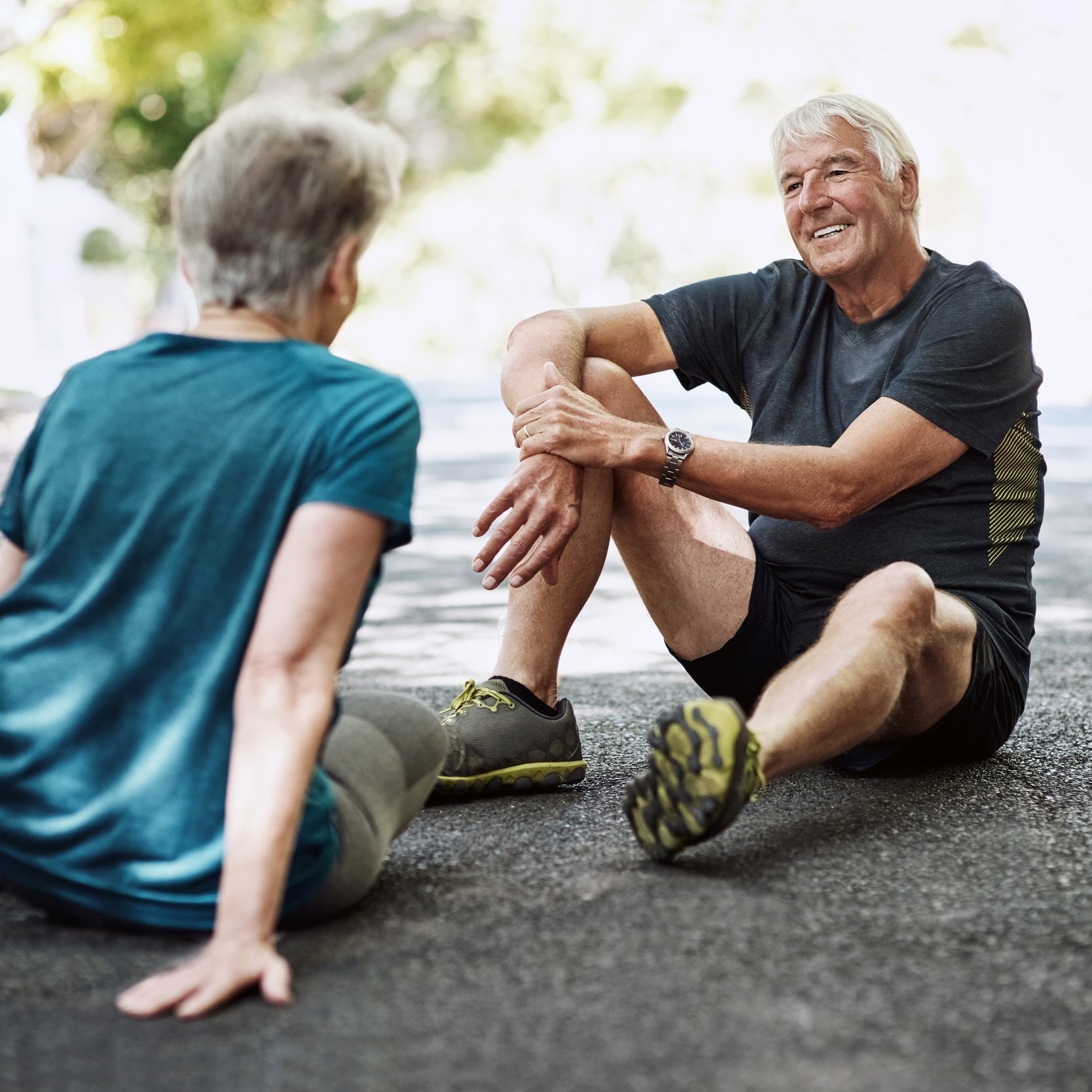Relieve hip and knee pain, and move with confidence.
GLA:D® Australia is a program for all individuals who experience any hip and/or knee osteoarthritis symptoms, regardless of severity.
Backed by strong research, GLA:D® has been shown to reduce pain, improve joint function, and enhance quality of life - offering a proven, non-surgical path to better outcomes.
Chronic Care Australia is an HBF-approved provider of the GLA:D® Program. This means eligible HBF members that are approved by HBF, can access the program at no cost. [Check your eligibility here].
An 20-minute initial consultation is required prior to the commencement of the program (no charge). In this consultation your eligibility and health history will be reviewed and discussed. If eligible, approval will be sought from HBF before confirmation and commencement of the program.
Call (08) 9385 1430 to discuss start dates, costs, or to register.
Upcoming program start dates:
✚ 20 January, 2026
10am class | Tuesdays & Thursdays
✚ 2 February, 2026
11am class | Mondays & Wednesdays
✚ 16 February, 2026
9am class | Mondays & Wednesdays
✚ 3 March, 2026
10am class | Tuesdays & Thursdays
Already a GLA:D participant? Head to CCA’s Program portal.
The Benefits of the GLA:D Program.
-
On average, participants experienced a reduction in pain of 33% after completing the program.
-
47% of participants reported a reduction in the use of pain relief medication.
-
GLAD education exercises can be applied to everyday activities ensuring participants develop skills to self-manage, stay active, prevent symptom progression and reduce pain.
-
Participants with knee osteoarthritis reported an average improvement in joint-related quality of life of 31%.
-
3 in 4 people desiring surgery before GLAD have not had surgery and no longer desire surgery at 12-month follow-up.
About GLA:D®
About the GLA:D program
✚ Research from the GLA:D® program in Denmark found symptom progression reduces by 32%.
✚ 3 in 4 Participants either avoided surgery or no longer had interest in surgery 12 months after completing the program.
✚ Other outcomes include a less pain, reduced use of joint related pain killers, and less people on sick leave.
✚ GLA:D® participants also reported high levels of satisfaction with the program and increased levels of physical activity 12 months after starting the program.
What does GLA:D involve?
✚ An initial appointment to explain the program and measure your current functional ability.
✚ Two education sessions that teach you about OA, its risk factors, treatment options and self-management strategies.
✚ Group exercise sessions twice a week for six weeks to improve your control of the joint, your confidence in the joint and your strength.
✚ A review at three months to discuss your progress and goals and re-measure your functional ability.
✚ Completion of a questionnaire on registration with the program, and then again at three and 12 months after registration to measure changes in areas such as pain, function, quality of life, and medication use.
Can I participate in GLA:D?
GLA:D® Australia is a program for all individuals who experience any hip and/or knee osteoarthritis symptoms, regardless of severity.
You may participate in the GLA:D® Australia program if you are currently managing osteoarthritis in your knee or hip.
Take the three easy steps below.
1
STEP 1
Consult with your treating exercise physiologist, physiotherapist, specialist or GP about your suitability for the program.
2
STEP 2
If you are a HBF member,
call HBF on 133 423 to check your cover eligibility.
(Rebates may apply with other insurers - check your cover).
3
STEP 3
Register for The GLA:D® Program with Chronic Care Australia using the link below.
Osteoarthritis is the most common lifestyle disease in individuals 65 years of age and older, but can impact people of any age.
GLA:D® Program Features
Education Sessions
Participants learn about osteoarthritis, its impact on daily life, and strategies to manage symptoms effectively across 2 x education sessions. Education is essential in empowering individuals to take control of their health.
Supervised Exercise Training
The program then progresses to a clinically supervised exercise regimen conducted twice a week for six weeks. Exercises focus on strengthening muscles, improving function, and promoting overall physical activity, thus enhancing joint stability and mobility.
Self-Management Strategies
GLA:D® encourages individuals to adopt self-management techniques to cope with their condition. This may involve setting personal goals, utilising pain management strategies, and implementing lifestyle changes to support joint health.
Register Today.
To register your interest, please add your details to the form below.
Our experienced GLA:D® clinician will be in touch with next steps.
If you have any questions regarding the GLA:D® program, please contact us at (08) 9385 1430. We are here to help.
GLA:D - Frequently Asked Questions.
What if I live in a remote or regional area of Australia?
You can use telehealth to access our GLA:D® services, as our clinicians offer this service remotely: https://GLA:D®australia.com.au/list-of-clinics-offering-the-GLA:D®-program-via-telerehab/
Also, if you visit an area from time to time, you can attend a clinic in that area for an assessment and complete the program via telehealth - as outcomes are not impacted.
How long does it go for and how much time do I need to dedicate to the program?
There are 2 initial education sessions followed by 12 supervised group exercise sessions (twice weekly) over a 6-week period. Each session – education and exercise – will take about 60 minutes. Wear comfortable clothing and footwear.
What can I expect?
GLA:D® has been shown to help people of all ages with mild, moderate and severe osteoarthritis by reducing pain, increasing mobility and enhancing quality of life. Often surgery such as joint replacement can be avoided.
Studies in Scandinavian countries have also shown that people who have completed the program before having a total knee joint replacement tend to recover post operatively more quickly. Similar ‘prehab’ results have been replicated for total hip replacements.
Will it hurt?
Whenever you do a new exercise, it’s normal and acceptable to have very mild pain during and after the session for up to 24 hours – and maybe a bit longer initially. Your clinician will help you learn how to monitor your pain so that you can challenge yourself without making your pain worse in the long run.
What happens after GLA:D®?
Your clinician will make an appointment to review your goals and progress 3 months after you registered with GLA:D®. This usually gives enough time for you to complete the program and start exploring what to do next. You may decide to work towards getting into a gym-based program in our wellness space called The Exercise Therapist or head back to running, tennis and golf or simply finding ways to increase your level of physical activity throughout the week. Your clinician will be able to advise, direct and prescribe you an appropriate ongoing exercise plan to suit your individual needs.
The exercises and strategies you learn in GLA:D® are also easily able to be continued by you at home. Most importantly, they are a tool for you to use whenever you feel you need to – for example, if something happens to reduce your level of activity, or if your pain increases. Some people will go back to doing their GLA:D® program after recovering from surgery.
Why is it important to encourage participants to share their data as part of the research project with La Trobe University?
CCA has established processes to encourage completion of baseline, 3-month and 12-month data collection. All participants are encouraged to provide their data to La Trobe University to assist with refining the program and strengthening the body of evidence for ongoing and future funding. There is a benchmark participation rate of 75% nationally for patients consent to share their data with La Trobe University.
Can I access the GLA:D® program at CCA if I am not an HBF member?
Non-HBF members who are not able to access GLA:D® still have access to our globally awarded 12-week exercise medicine program for osteoarthritis. Private health rebates apply to eligible policy holders with cover for exercise physiology services.
Contact your private health insurance provider for details, quoting the Item Code 502. For general information about exercise physiology related services that receive rebates, please click here.



